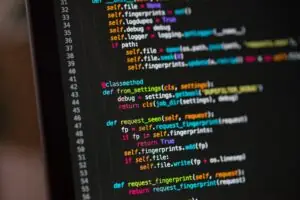In programming, particularly in C, understanding user input is pivotal. This article demystifies the process of capturing user input in C, utilizing the scanf() function, and elaborating on how variables, strings, and characters play a crucial role in this context. We’ll explore the syntax and practical applications through examples, ensuring a thorough grasp of the topic.
Understanding the Basics of User Input
At the core of interactive C applications is the ability to prompt the user for input. This interaction is facilitated by various functions, among which scanf() is the most commonly used. The scanf() function, standing for “scan formatted”, allows the program to read formatted input from the standard input stream, typically the keyboard.
The scanf() function is versatile, capable of reading various data types, including integers, floating-point numbers, characters, and strings. The syntax of scanf() is straightforward:
scanf("format specifier", &variable);The format specifier dictates the type of data the function expects to receive, while the ampersand (&) is used before the variable name to pass the address of the variable, allowing scanf() to store the input value directly in it.
Variables and Data Types
Variables are placeholders used to store data values. In the context of user input, they are essential for capturing and storing the inputs provided by the user. C supports several data types for variables, including int for integers, float and double for floating-point numbers, and char for single characters. When using scanf(), it’s critical to ensure that the format specifier matches the variable’s data type to avoid errors and undefined behavior.
Practical Examples
To illustrate the concepts discussed, let’s explore a few examples that demonstrate how to use scanf() to capture different types of user input.
Consider a scenario where you want to input an integer and a floating-point number:
#include <stdio.h>
int main() {
int userInt;
float userFloat;
printf("Enter an integer: ");
scanf("%d", &userInt);
printf("Enter a floating-point number: ");
scanf("%f", &userFloat);
printf("You entered the integer: %d\n", userInt);
printf("You entered the floating-point number: %f\n", userFloat);
return 0;
}This example demonstrates the use of %d and %f as format specifiers for integer and floating-point inputs, respectively.
Reading Strings and Characters
To capture strings and characters, scanf() can be used with the %s and %c format specifiers. However, capturing strings requires attention to buffer sizes and potential overflow issues:
#include <stdio.h>
int main() {
char userChar;
char userString[50];
printf("Enter a character: ");
scanf(" %c", &userChar); // Note the space before %c to consume any leftover newline character
printf("Enter a string: ");
scanf("%s", userString); // Assumes the string does not contain spaces
printf("You entered the character: %c\n", userChar);
printf("You entered the string: %s\n", userString);
return 0;
}Yet, while scanf() is powerful, it has its limitations, particularly with string inputs containing spaces. In such cases, functions like fgets() can be used for more robust input handling. Additionally, for complex input patterns, combining scanf() with other input functions can offer more flexibility and control.
When using scanf(), there are several common pitfalls to be aware of:
- Buffer Overflow: Always ensure that strings have enough space to store the input, including the null terminator.
- Input Validation:
scanf()returns the number of successfully read items; checking this return value can help validate the input. - Handling Leftover Characters: Especially with character inputs, leftover newline characters in the input buffer can cause issues. Using a space before the format specifier for character inputs, as shown in the examples, can mitigate this.
Conclusion
Capturing user input in C is a fundamental skill that underpins the creation of interactive applications. Through the scanf() function and an understanding of variables and data types, developers can effectively read and process user input. By adhering to best practices and being mindful of common pitfalls, one can harness the full potential of user input in C programs, paving the way for more dynamic and responsive software solutions. Incorporating user input not only makes programs more interactive but also allows them to be more flexible and user-friendly. As you progress in your C programming journey, experimenting with different input methods and understanding their nuances will significantly enhance your coding toolkit.
FAQ
Follow us on Reddit for more insights and updates.





Comments (0)
Welcome to A*Help comments!
We’re all about debate and discussion at A*Help.
We value the diverse opinions of users, so you may find points of view that you don’t agree with. And that’s cool. However, there are certain things we’re not OK with: attempts to manipulate our data in any way, for example, or the posting of discriminative, offensive, hateful, or disparaging material.